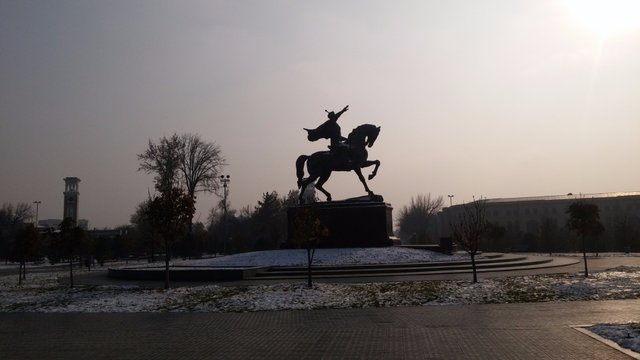In my opinion, the monument is not just a piece of stone or bronze. This is a visual display of the level of maturity and morality of society, an indicator of spirituality and the degree of development of the people. Monuments are a kind of frozen image of the current ideology of the state. With the help of monuments one people can express their respect and respect to other peoples. Or, on the contrary, humiliate and insult. Exaltation or destruction of monuments has become one of the tools of ideological struggle.
As part of this relay race, I would like to publish photographs of a monument to our (in the Uzbek sense) great statesman and governor Amir Temur or Tamerlane.
We have three main monuments in the country - one in Shakhrisabz - Tamerlan's homeland, the second - in Samarkand - the capital of his empire and the third in Tashkent - in the capital of modern Uzbekistan.
In Shahrisabz, Tamerlane stands on a high pedestal. This is a kind of symbol of the fact that in this city Tamerlane rose to his feet as a ruler and from there began his journey to build one of the largest on the territory of the empires of the Middle Ages.
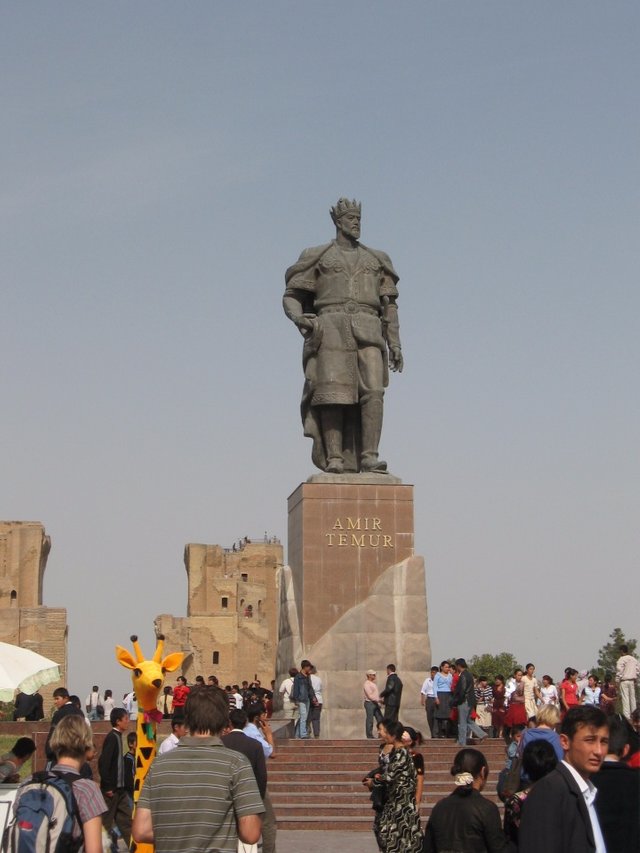
Tamerlane stands in the gateway to his first residence "Ok-Saray" ("White Palace"). From this monumental majestic structure there were only pylons of the entrance portal and some land constructions. But even the destroyed gates impress with their size and scope - once they were about 70 meters high!
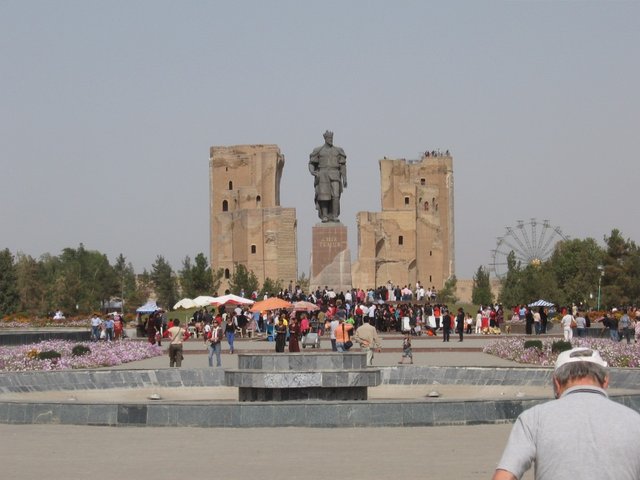
The second monument to Tamerlane is located in Samarkand - 80 km from Shakhrisabz. When Tamerlane grew stronger and began to build his empire, the capital he chose the city of Samarkand. Samarkand was almost completely destroyed after the invasion of hordes of Genghis Khan in the 13th century and Tamerlane practically restored the city. According to Tamerlane's idea, Samarkand was to become the capital of capitals and therefore the settlements around Samarkand received the names of the world capitals - say, the world's greatest capitals are only small villages in comparison with Samarkand. It must be admitted that the period of Timurids dynasty rule was a period of flourishing and prosperity of the city. The most popular monumental structures were built exactly in that period.
The monument is located near the place of its repose - the mausoleum of Gur-Emir (Tombs of the Kings). Here Tamerlane sits on the throne. Thus, the monument as it shows that Tamerlane has strengthened and established its power and confidently sits on his throne in the capital of his state. Although, by and large, in the conquest campaigns he spent more time than in his halls ...
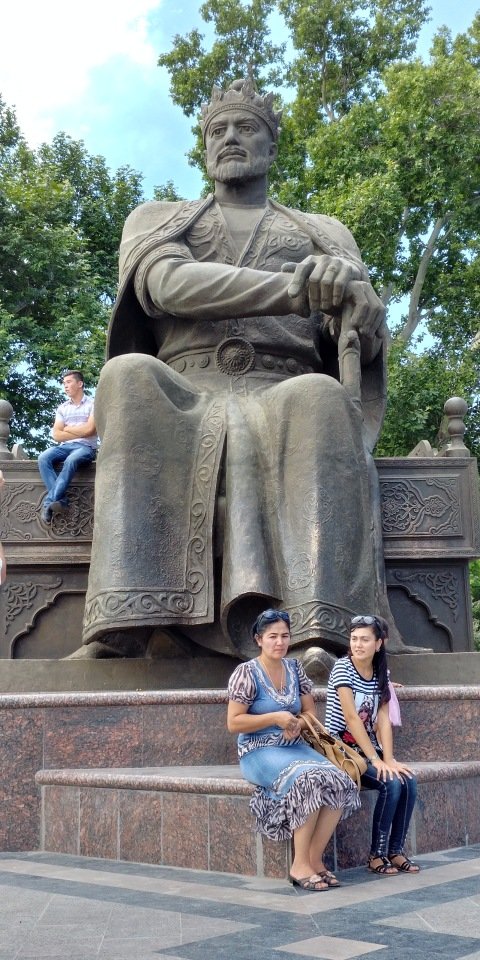
Behind the monument begins an alley of century-old trees - University Boulevard. Very beautiful alley. Sprawling crowns of oaks and plane trees (plane trees) hide the inhabitants from the scorching heat. Here you can walk, or you can just sit with a book. When I'm in Samarkand, I definitely stroll along this boulevard.
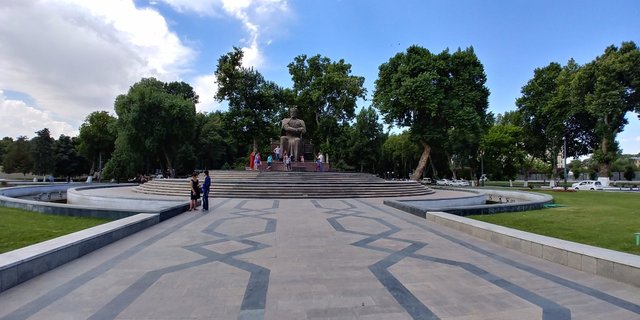
And, finally, a monument to Tamerlane in Tashkent. Then he sits on a horse. Now this is called Amir Temur Square. Previously, it was the square of the Revolution and on the site of the monument to Tamerlane there was a bust of Karl Marx. And even earlier this square was called Kaufmansky - in honor of the governor-general Kaufman.
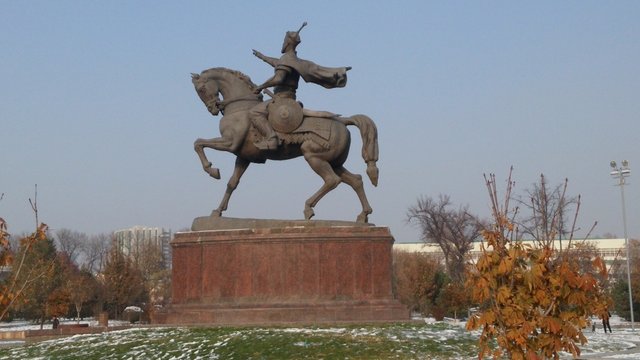
The forward-looking Tamerlane is designed to symbolize Uzbekistan's aspirations for the future, but with the support of the heritage and the achievement of our ancestors.
